#improve range of motion
Explore tagged Tumblr posts
Text
Unlocking Flexibility: The Power of Passive Stretch Tests and Stretches to Relieve Body Pain
In today's fast-paced world, many of us find ourselves grappling with tight muscles, limited range of motion, and persistent body pain. Whether due to sedentary lifestyles, repetitive movements, or strenuous activities, these issues can significantly impact our quality of life. However, there's hope! By incorporating passive stretch tests and targeted stretches into your routine, you can unlock greater flexibility, alleviate body pain, and enhance your overall well-being.
Understanding Passive Stretch Tests:
Passive stretch tests are a valuable tool for assessing flexibility and identifying areas of tension in the body. These tests involve gently stretching a muscle or group of muscles to their end range of motion, without active participation from the individual. By observing the response of the muscles to the stretch, healthcare professionals can gain insights into muscle imbalances, restrictions, and potential areas of concern.
Stretches to Relieve Body Pain:
Once you've identified areas of tension through passive stretch tests, it's time to address them with targeted stretches. Here are some effective stretches to relieve body pain and
improve range of motion:
Hamstring Stretch: Sit on the floor with one leg extended and the other bent. Lean forward from the hips, keeping your back straight, until you feel a gentle stretch in the back of your thigh. Hold for 20-30 seconds, then switch sides.
Hip Flexor Stretch: Kneel on one knee with the other foot flat on the floor in front of you. Lean forward slightly, keeping your back straight, until you feel a stretch in the front of your hip. Hold for 20-30 seconds, then switch sides.
Chest Opener Stretch: Stand tall with your feet hip-width apart. Clasp your hands behind your back and gently straighten your arms, lifting your chest and opening your shoulders. Hold for 20-30 seconds, then release.
Neck Stretch: Sit or stand tall and gently tilt your head to one side, bringing your ear towards your shoulder. Hold for 20-30 seconds, then switch sides. For an added stretch, gently press down on the opposite shoulder with your hand.
Tips to Improve Range of Motion:
Regularly incorporating passive stretch tests and targeted stretches into your routine can help improve range of motion and prevent muscle stiffness and tightness. Here are some tips to help you maximize the benefits:
Consistency is Key: Aim to stretch major muscle groups daily to maintain flexibility and prevent tightness from accumulating.
Focus on Quality: When performing stretches, focus on quality over quantity. Ensure each stretch is performed with proper form and alignment to avoid injury
Hold and Breathe: Hold each stretch for 20-30 seconds to allow the muscles to relax and lengthen. Remember to breathe deeply and steadily throughout the stretch.
Gradual Progression: Gradually increase the intensity and duration of your stretches over time to continue challenging your muscles and improving flexibility.
Listen to Your Body: Pay attention to how your body responds to each stretch. Avoid pushing into pain and respect your body's limits to prevent injury.
Variety is Key: Incorporate a variety of stretches into your routine to target different muscle groups and prevent imbalances.
Post-Workout Stretching: Perform stretches at the end of your workout when your muscles are warm and more receptive to stretching. This can help improve flexibility and reduce muscle soreness.
By following these pointers and incorporating passive stretch tests and targeted stretches into your routine, you can enhance and improve range of motion, alleviate body pain, and improve your overall well-being.
Conclusion:
Don't let tight muscles and body pain hold you back from living life to the fullest. By incorporating passive stretch tests and targeted stretches into your routine, you can unlock greater flexibility, alleviate body pain, and improve your overall quality of life. Start today and experience the transformative power of stretching!
Ready to take the first step towards a more flexible, pain-free life? Visit L'Anatomie to explore a range of stretching tools and resources designed to help you achieve your wellness goals.
0 notes
Text

We know that PNFs are effective for relieving tension in muscles and increasing range of motion, but how does this work? That's exactly what this article will explain. In addition, you will learn the steps involved in several types of PNF stretching techniques.
#CRAC#contract-relax#hold-relax#contract-relax-antagonist-contract#PNF#proprioceptive neuromuscular facilitation#Golgi tendon organ#muscle spindle#nociception#nociceptor#proprioceptors#gate control theory#flexibility#improve range of motion#physiology#kinesiology#physical therapy#massage therapy
0 notes
Text
i've started using Just Dance as a workout and well. it's super fun, but i've discovered that i have No Coordination. at all <3 i'm having the time of my life flailing around like a dying fish
#fighting for my life on easy mode-#i think if anyone looked in my room while im 'dancing'#theyd call 911 and tell them im having a seizure#ill hit the rhythm for a glorious two seconds#and Immediately lose it again!#apparently i cannot dance <3 sense of rhythm Who <3#but i dont care! im having fun! fun exercise!#absolutely unprompted#and i really need it#range of motion in my shoulders is kinda fucked#my body is too acclimated to shrimping in a desk chair#gotta flail around to improve my health smh
77 notes
·
View notes
Text
My dentist confirmed what I already suspected, that my right TMJ is bone on bone.
But my teeth are very strong and healthy, so that's...something, at least.
#no sense in wasting energy feeling angry#but had my past doctors/dentists taken me seriously i might not be in this situation now#american health system#sucks balls#i fucking hate it here#maybe with braces a bite guard and PT the pain will be manageable/alleviated and range of motion improved
4 notes
·
View notes
Text
yall remember when I fell like a month ago? yeah my hand STILL hurts 😔
#duuuude i messed that thing up somehow#back when i fell remember i couldn't grip anything for the rest of the evening?#yeah well that improved in about 2 days but i continue to feel twinges of pain in my hand in certain positions a full month later#idk what i did#i assumed at the time i didn't hurt myself badly since it didnt swell Or bruise?#anyway it doesnt hurt enough to impede me in any way. it's not concerning or super painful#it's just enough to remind me Hey You Fell On Me if i put my hand a certain way#dunno how i hurt it or whay specifically got hurt#seems like it's sort of pinky finger metacarpal area#but again. never swelled or bruised or anything and i had full range of motion and strength again after 2 days#so???
7 notes
·
View notes
Text
Had quite a lot of mushrooms Friday night and managed to stretch so well that a chronic left shoulder issue I've had for almost a decade feels the best it's felt since I injured it. Better than PT, better than massage. Fascinating.
#my range of motion improved#i can turn my head all the way to the left again#and it no longer makes a popping sound every time i tilt my head to the right
1 note
·
View note
Text
(cw for blood and injury) so i cut my hand pretty badly the other day and determined after some examination that i didn't want to go to urgent care for stitches so i just washed it off and bandaided it up real good, and then put liquid bandage on it the next day and have been changing the dressings regularly
anyway it's not pulling open and it's not hot to the touch and it's not red and inflamed and it's not itchy so presumably everything's fine but i am extremely fretful about it because i'm fretful about my job starting tomorrow and anxiety loves to stir itself into any available pot
also washing my hair with a nitrile glove on one hand was a very weird experience.
#btw this liquid bandage stuff? great. improved the range of motion without pain pretty notably and hasn't even pulled off or anything#it does hurt like all hell for the first minute or so it's on the cut which i did not handle with grace#me yelling across the apartment I UNDERSTAND WHY THEY MAKE A VERSION WITH LIDOCAINE NOW#but honestly seems pretty stable and stuff! i have regular bandaids over it bc the cut is on the heel of my hand#so lots of movement and contact and also the bandaids keep my thumb from moving as much which is helpful for not moving the cut#i'll definitely use the liquid bandage stuff for other things despite how much it hurts#i hope y'all enjoy this kind of content while i can't tweet
2 notes
·
View notes
Text
It’s wild to me that some professionals can just figure this shit out
When I first started training for the Camino something started aching in my hip. I did so much googling trying to figure out the issue but nothing useful came up. So I finally said “fuck this” and paid out of pocket for PT. (Going through my insurance meant waiting six weeks.)
I was lucky and the first PT I saw just watched me walk across the room and back and was like: I see the issue.
You do?!
It was a muscle in my butt—not the gluteus Maximus, one of the little ones under it. My tight hip flexors were making the situation worse.
I got to do a billion bridges and clamshells and weird crab walks. And at my follow ups they loved digging their thumbs into the muscles of my butt (felt GREAT). But it WORKED.
My ankle journey
I am sharing this with all you good people on the dash because I am so fucking mad it took so long for me to learn it and if I can spare one (1) person the agony it will be worth it.
So for like...oh, 8 or 9 months, I've been struggling with pain/inflammation/tendinitis in my left Achilles tendon. I don't know what caused it. It just started up (welcome to middle age, this shit happens). It wasn't severe enough to be debilitating, but it was annoying and limiting. It was also intermittent, in that some days it would be very painful and other days hardly at all. The kind of shoe I was wearing affected it a lot.
Now, I have bone spurs on both heels (it's just a thing that happens as you get older sometimes). I'm also aware that heel pain is usually the result of tight calf muscles that pull and irritate the tendon. I tried stretching that calf muscle. You know the stretch, this bitch right here:

I did it all the time. I also iced the ankle after walking for awhile, hoping to avoid inflammation. Results were...unsatisfying.
I went to:
A chiropractor
A podiatrist
A physical therapist
A bodywork coach
They all gave me some variation on the "strengthen your calf muscle, stretch your calf muscle" advice. I continued doing this without results.
I was getting frustrated, and a little afraid that this was just my life now. Finally, I thought...maybe some targeted massage might help. I asked for rec on a local FB site and was pointed to a woman who specializes in therapeutic massage including cupping, etc.
I went to her a week ago.
She spent over half our first session working on my left lower leg. Within about 10 minutes of making my eyes water, she uttered the sentence I did not know I had been waiting to hear:
"Oh, it's your soleus."
Excuse me, what?
"It's your soleus that's the culprit. It's all tied up and stiff." She started digging into it and I felt literal sparks run up my leg as she released adhesions and got the muscle moving a little. When she finally put the leg down, it felt like it was on fire with all the blood rushing into it.
She said, "You'll need to stretch your soleus. It'll clear up, but it'll take a bit of time - tendons take ages to heal."
But I HAVE been stretching.
"No, you haven't. The usual straight-leg calf stretch only stretches the gastrocnemius, that's the big belly muscle in your calf. That's not your problem. That stretch doesn't stretch the soleus. Don't worry, I'll show you how to stretch it."
My mind is spinning.
So here are the muscles in question:
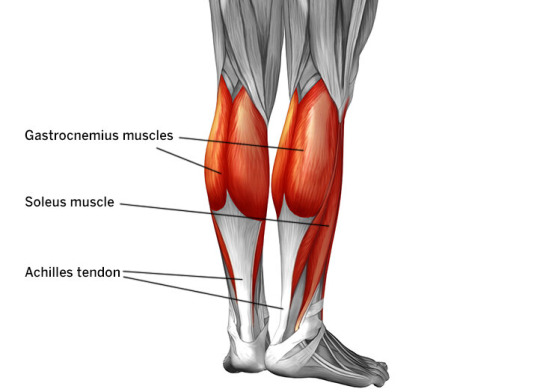
The gastroc (as the pros call it) just attaches down the back but the soleus runs underneath it from the knee around the side to the heel. The lower part above the ankle is where it typically gets tight and forms adhesions.
To stretch it, you do the same calf thing where you put your foot back and press your heel to the ground, but you have to do it with your KNEE BENT:
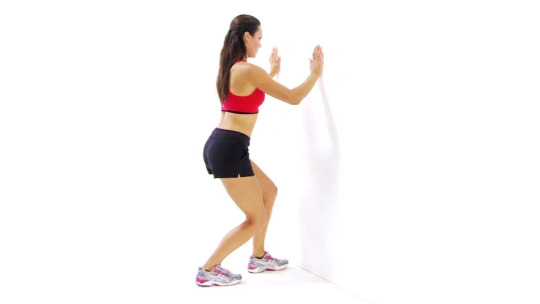
The bent knee keeps the gastroc from engaging. It's one of those selfish muscles (like traps) - if you give it an inch, it'll just take over and prevent other muscles from working or stretching. There are other ways to stretch the soleus but this is the easiest and you can literally do it anywhere. I've been doing it while standing and waiting for things (the elevator to come, the toast to toast). You just put the heel back and bend the knee. It's kind of like curtseying.
The minute I did this stretch, I could FEEL where it was pulling on my tendon. I knew that THIS had been the problem.
The massage therapist also told me to stop icing my heel. She said icing is for an acute injury, but a more chronic aggravation needs heat, to increase blood flow for healing. She recommended elevation with heat every day (I've been doing it in bed during "phone before bed" time).
I have been doing the soleus stretch at least half a dozen times a day for almost a week, and the ankle is at least 70% better. It is still a little tight and tender, but the improvement is significant. I think a few more weeks will have it feeling normal.
I am...blown away by this. This massage therapist was able to pinpoint an issue in only a few minutes that eluded all the other professionals I saw. I can't wait to go back to her and have her solve all my other problems, tbh.
#achilles tendon#ankle#might be useful for someone!#At my last visit they remeasured my range of motion#the improvement was amazing!!
6K notes
·
View notes
Text

#A top body massage is a deeply rejuvenating treatment that focuses on relieving tension and stress in the upper body#including the neck#shoulders#upper back#and arms. This massage uses a blend of firm#slow strokes and gentle kneading techniques to release tight knots#improve circulation#and restore flexibility to tired muscles. As tension melts away#the soothing touch promotes relaxation while also enhancing your posture and range of motion. Ideal for those who carry stress in their upp#this experience leaves you feeling refreshed#re-energized#and free from discomfort.#https://www.priyarussianspa.in/
0 notes
Text
Adjustments and Manipulation Augusta, GA | PeachCare Family Chiropractic
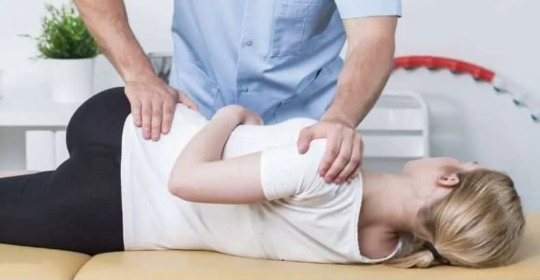
Chiropractic adjustments and manipulation are at the core of our holistic approach at PeachCare Family Chiropractic. These hands-on techniques are designed to restore proper alignment, reduce pain, and improve overall well-being. Our approach to adjustments and manipulation involves skilled and precise techniques from our experienced chiropractor, Dr. P. Scott Holder. These methods aim to correct misalignments, relieve discomfort, and promote the body’s natural healing processes.
#Adjustments and Manipulation#Back Pain#Neck Pain#Headaches#Joint Discomfort#Muscle Tension#Posture Correction#Pain Relief#Improved Range of Motion#Enhanced Mobility#Holistic Healing#Non-Invasive Treatment#Personalized Care#Tailored Treatment Plan#Precise Chiropractic Adjustments#Hands-On Manipulation Techniques#Post-Treatment Assessment
0 notes
Text
youtube
The Moving Target Revolution brings motion to 3D archery. Learn more at http://archerynmotion.com
#archery#3d archery#bowhunting#archery range#hunting#moving 3d archery target platform#moving target platform#moving targets#veteran owned small business#youtube#Where every shot counts#Archery N Motion#Improved Accuracy#3D archery competition#3d archery tournament#archery practice#archery life#archery targets#archery target#Youtube
0 notes
Text
0 notes
Text
Unlocking the Benefits of Stretching Glutes: A Comprehensive Guide to Enhanced Flexibility and Performance
Discover the profound advantages of glute stretching for elevated flexibility, performance, and overall well-being. Explore effective techniques and expert insights in this extensive guide. Introduction In the pursuit of a healthier, more active lifestyle, the importance of proper muscle care and exercise cannot be overstated. Amid the landscape of muscle groups deserving attention, the glutes…
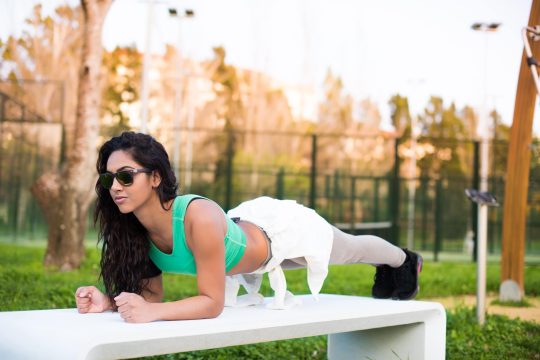
View On WordPress
#athletic prowess#blood circulation stimulation#dynamic warm-up#enhanced range of motion#Exercise Benefits#expert insights#fitness routine#flexibility enhancement#glute stretching#Injury prevention#lower back pain relief#mind-muscle connection#muscle care#muscle elasticity#physical performance#pigeon pose#posture improvement#standing glute stretch#stretching techniques#supine glute stretch
1 note
·
View note
Text
all about mobility



what is mobility & how is it different from flexibility?
mobility is the ability of the joints to move through their full range of motion, while flexibility is the ability of the muscles to temporarily stretch.
why do mobility training?
there are many different benefits of mobility training, including:
increased flexibility
reduced risk of injury
improving joint & muscle health
improving range of motion
improving posture
gaining muscle strength
balance & stability
reducing pain & stiffness in the body
when should i start?
now! there’s a common misconception that you shouldn’t need mobility training until you are in your later years and your mobility starts to decline, but mobility training is useful no matter your age. in fact, the sooner you start, the less mobility & joint problems you will experience as you age.
how often should i train mobility?
mobility training is safe and beneficial to do daily, but ideally, you should try to train mobility at least 5 times per week for at least 5-10 minutes each time.
routines:
10 minute mobility workout by growingannanas
10 minute mobility for neglected joints by julia.reppel
15 minute daily mobility routine by julia.reppel
15 minute mobility stretch by growingannanas
20 minute slow mobility & stretch by julia.reppel
20 minute full body mobility warm up by leanbeefpatty
20 minute spinal mobility by julia.reppel
20 minute mobility workout by julia.reppel
20 minute rest day mobility flow by julia.reppel
20 minute pilates x mobility by julia.reppel
20 minute full body mobility by julia.reppel
25 minute full body stretch & mobility by madfit
25 minute mobility workout by julia.reppel
25 minute yoga for mobility by jess yoga
25 minute rest day mobility by julia.reppel
25 minute low impact mobility workout by julia.reppel
25 minute mobility workout by marie steffen
30 minute full body primal mobility by julia.reppel
30 minute primal mobility workout by julia.reppel
30 minute mobility yoga for athletes by charlie follows
30 minute beginner-friendly mobility flow by julia.reppel
30 minute mobility workout by fitness__kaykay
30 minute active recovery workout by heather robertson
30 minute core strength & shoulder mobility by heather robertson
35 minute yoga fusion workout by heather robertson
40 minute mobility & dynamic stretching by heather robertson
40 minute abs & hip mobility by heather robertson
40 minute core strength & back mobility by heather robertson
40 minute core strength & mobility by heather robertson
40 minute core & shoulder mobility by heather robertson
40 minute abs & mobility by heather robertson
44 minute core & full body mobility by heather robertson
#girlblog#girlblogger#girlblogging#that girl#dream girl#it girl#self care#self love#glow up#becoming that girl#self help#self improvement#self development#wonyoungism#health aesthetic#health and lifestyle#health#health blog#fitness blog#fitness#pink pilates princess aesthetic#pink pilates girl#pink pilates princess#green juice girl aesthetic#green juice girl#clean girl aesthetic#clean girl#matcha girl#wellness#wellness girl
1K notes
·
View notes
Text
Benefits of Stretching Exercises
Introduction Hello there, beloved reader! Today we’ll speak about something you may have overlooked, but is critical for your health: stretching exercises! Before you shrug your eyes and say, “ugh, stretching is so boring,” please hear me out. Stretching exercises are not only simple to perform, but they also have numerous health and mental advantages. To begin, what exactly are flexibility…
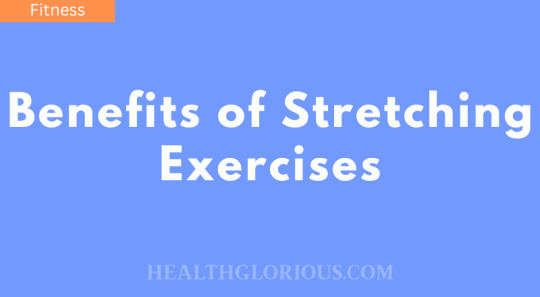
View On WordPress
#athletic performance enhancement#blood circulation#cardiovascular exercise#chronic disease prevention#flexibility#heart health#injury prevention#joint pain reduction#mental health#posture improvement#range of motion#sleep quality#stress relief#stretching exercises
0 notes
Text
a beginners guide to pilates
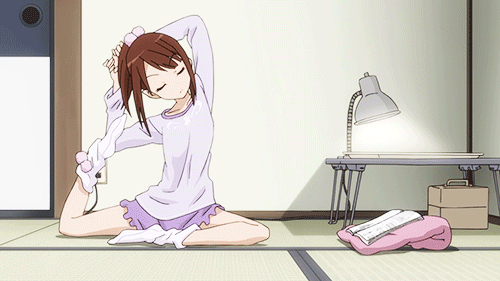
pilates is a low-impact exercise method that focuses on strengthening the body, improving flexibility, and enhancing overall fitness. it's suitable for people of all ages and fitness levels, making it an excellent choice for beginners who are looking to start a new exercise routine. in this guide, we'll cover the basics of pilates and provide tips for getting started.
what is pilates?
pilates was developed by joseph pilates in the early 20th century as a system of exercises designed to improve strength, flexibility, and body awareness. it incorporates a series of controlled movements that target the core muscles, as well as other muscle groups throughout the body. pilates emphasizes proper alignment, breathing, and concentration, making it a holistic approach to fitness.
benefits of pilates
strengthens core muscles: pilates focuses on strengthening the muscles of the core, including the abdominals, lower back, and pelvic floor, which can improve posture and stability.
improves flexibility: pilates exercises promote flexibility and range of motion in the muscles and joints, reducing the risk of injury and enhancing overall mobility.
enhances body awareness: pilates encourages mindful movement and body awareness, helping individuals develop a deeper connection between mind and body.
promotes relaxation: pilates incorporates breathing techniques and relaxation exercises, which can help reduce stress and promote a sense of calm and well-being.
increases muscular endurance: pilates exercises are performed in a slow and controlled manner, which helps build muscular endurance over time, allowing individuals to perform daily activities with greater ease.
getting started with pilates
find a qualified instructor: if you're new to pilates, consider taking a class with a certified pilates instructor who can guide you through the exercises and ensure proper form and technique.
start with the basics: begin with beginner-level pilates exercises that focus on building core strength, such as the hundred, pelvic tilts, and leg circles. gradually progress to more challenging exercises as you gain strength and confidence.
focus on proper alignment: pay attention to your alignment during pilates exercises, keeping your spine neutral and your shoulders relaxed. engage your core muscles to stabilize your body and prevent injury.
breathe deeply: practice diaphragmatic breathing during pilates exercises, inhaling deeply through your nose and exhaling fully through your mouth. coordinate your breath with your movements to promote relaxation and enhance concentration.
listen to your body: listen to your body and work at your own pace during pilates workouts. if an exercise feels too challenging or causes discomfort, modify it or take a break as needed.
be consistent: aim to practice pilates regularly to experience the full benefits of the method. start with two to three sessions per week and gradually increase the frequency and duration of your workouts as you progress.
remember that pilates is a journey, and progress takes time and dedication. be patient with yourself as you learn and grow in your practice, and enjoy the many benefits that pilates has to offer for your mind, body, and spirit.
#pilates#pink pilates princess#that girl#self care#pink pilates girl#pilates aesthetic#pilatesworkout#yoga pilates#healthy habits#health and wellness#wellness#healthylifestyle#wellbeing
2K notes
·
View notes